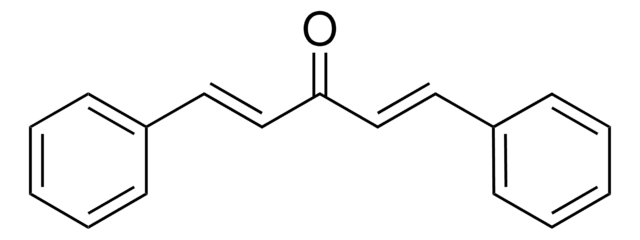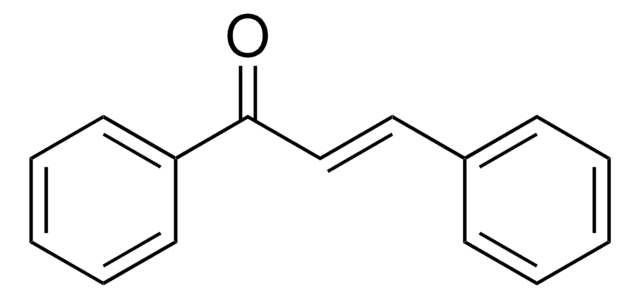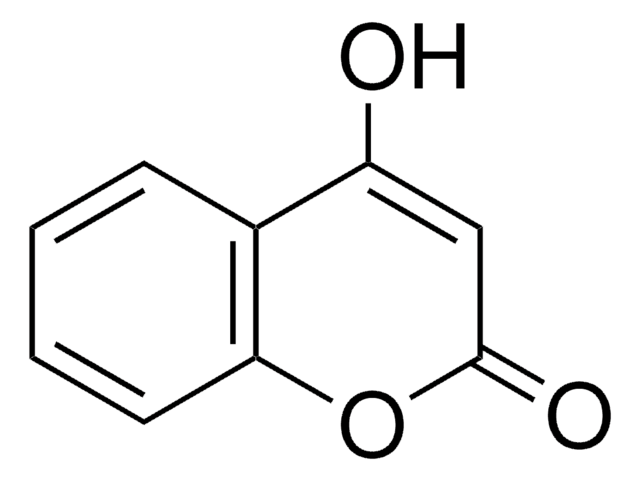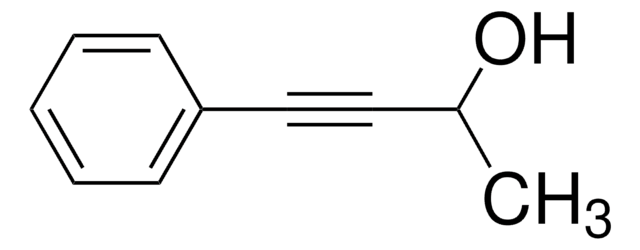147885
4-Phenyl-3-buten-2-one
99%
Sinónimos:
Benzalacetone, Benzylideneacetone, Methyl styryl ketone
About This Item
Productos recomendados
vapor pressure
0.01 mmHg ( 25 °C)
Quality Level
assay
99%
form
solid
bp
260-262 °C (lit.)
mp
39-42 °C (lit.)
solubility
alcohol: freely soluble
benzene: freely soluble
chloroform: freely soluble
diethyl ether: freely soluble
petroleum ether: very slightly soluble
water: very slightly soluble
SMILES string
[H]\C(=C(\[H])c1ccccc1)C(C)=O
InChI
1S/C10H10O/c1-9(11)7-8-10-5-3-2-4-6-10/h2-8H,1H3/b8-7+
InChI key
BWHOZHOGCMHOBV-BQYQJAHWSA-N
¿Está buscando productos similares? Visita Guía de comparación de productos
Categorías relacionadas
General description
signalword
Warning
hcodes
Hazard Classifications
Skin Irrit. 2 - Skin Sens. 1
Storage Class
11 - Combustible Solids
wgk_germany
WGK 2
flash_point_f
253.4 °F - closed cup
flash_point_c
123 °C - closed cup
ppe
dust mask type N95 (US), Eyeshields, Faceshields, Gloves
Elija entre una de las versiones más recientes:
¿Ya tiene este producto?
Encuentre la documentación para los productos que ha comprado recientemente en la Biblioteca de documentos.
Los clientes también vieron
Nuestro equipo de científicos tiene experiencia en todas las áreas de investigación: Ciencias de la vida, Ciencia de los materiales, Síntesis química, Cromatografía, Analítica y muchas otras.
Póngase en contacto con el Servicio técnico










